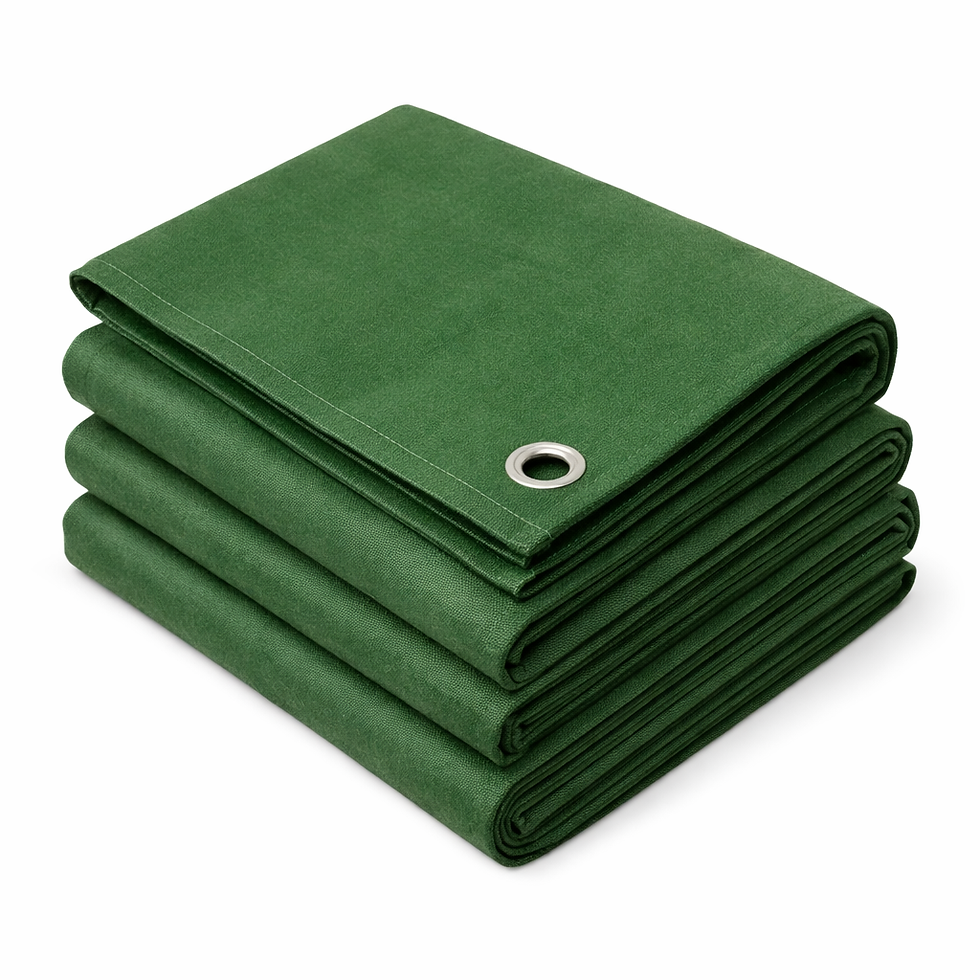Lightweight Yet Strong: The Future of Tarpaulin
- Bradley Tomlinson

- Jul 21, 2025
- 3 min read
Tarpaulin, a fabric that is renowned for being a strong and water-resistant material that is suitable for use in various missions, for a long time has been a mandatory part of various engineering sectors which endured the test of time to be a selected material item for various situations.
As the revolution of technology goes, so does the promising future of Tarpaulin, in which the innovations are oriented towards the making of a material that is lightweight yet stronger than before. This report discusses the tarpaulin technology advancements and the impact that it might have on the rise of the sector.
The Evolution of Tarpaulin
Ordinarily, tarpaulins were made from canvas or other heavy fabrics treated with waterproofing agents. The manufacturers had, over time, begun embedding artificial materials such as polyethylene and vinyl for toughness and resistance to water. The newly developed tarpaulins aim to solve the conflict of weight and strength, which has existed for a long period of time.
Innovative Materials
Developers and entrepreneurs also join the bandwagon in searching for and concocting other materials that could be used to come up with light yet strong tarpaulins. These materials include:
Nanofiber-reinforced polymers.
Graphene-infused fabrics.
High-performance synthetic blends.
Biodegradable and eco-friendly composites.
These materials brought in the potential to have high strength-to-weight ratios, thus facilitating the making of conclusion that the tarp's production that is lighter will be independently tough, but also the material will be nearly totally element proof.
Advanced Manufacturing Techniques
Along with advanced materials, modern manufacturing technologies are showing good results in the improvement of tarpaulin quality. These methods encompass:
3D printing for custom designs and patterns.
Ultrasonic welding for stronger seams.
Plasma treatment for enhanced surface properties.
Nanotechnology applications for improved water and UV resistance.
The cutting-edge technology makes it possible to make tarpaulins following the most stringent of industrial standards; they serve a multifunctional purpose, and they run in an environmentally friendly manner.
Applications Across Industries
The development of light yet strong Canvas Tarpaulin sheets comes with the wide application of these materials in different fields:
Construction
When tarpaulins are used, fewer raw materials are needed, saving costs associated with transport. The manufacturers, on the other hand, maintain the ability to cover by employing less amount of materials, thereby decreasing the costs and increasing the efficiency in construction sites.
Agriculture
Farmers and other staff in the agriculture industry are exposed to lighter tarpaulins with easy deployment and removal. They are made out of the superfine sub fabric, which is similar to laminate and exhibits the same properties as in the previous paragraph; it has lightweight, flexibility, and outdoor conditions survivability thanks to the molecular arrangement.
Transportation
Logistics and transportation businesses can reduce oil use and improve their safety with these tarpaulins. They are made of thin materials to cover trucks and containers, which are supposed to consume less fuel in transportation operations, thus becoming more efficient and cost-effective.
Outdoor Recreation
This development assures the campers, hikers, and nature lovers a chance to enjoy taking with them the light and strong tarpaulins which protect from elements in a compact form. These improvements are making it more convenient for users to be able to set and transport shelters in a wide variety of outdoor settings.
Environmental Considerations
In light of the upsurge in environmental awareness, the tarpaulin sector is going green, devising eco-friendly alternatives. The use of biodegradable options and recycling programs for traditional tarpaulins is one of the possible green solutions that help the environmental concerns to be addressed.
Challenges and Future Outlook
The future of tarpaulin is optimistic. Despite the many challenges that still hold sway, there is progress being made in the sector. Some of the issues include:
Synchronization of the minimalist production needs with cost-effective raw materials.
Thorough checking of the durability of the new composites over a long period.
Following the different industry standards and regulations provides a solution to the problem.
Getting consumers to understand and appreciate the unique features of tarpaulins.
Conclusion
The voyage of Tarpaulin Cover in the form of a heavy, unwieldy article to a robust, lightweight one is a confirmation of human creativity and scientific progress. From now on, the new forms of technology will shift the whole economy. The new technologies were implemented in this industry, opening it up from traditional to high tech by using the Internet of Things, letting users access different services. The next generation of tarpaulin is not just light in weight and strong in content; it is more intelligent, flexible, and more sustainable.









Comments